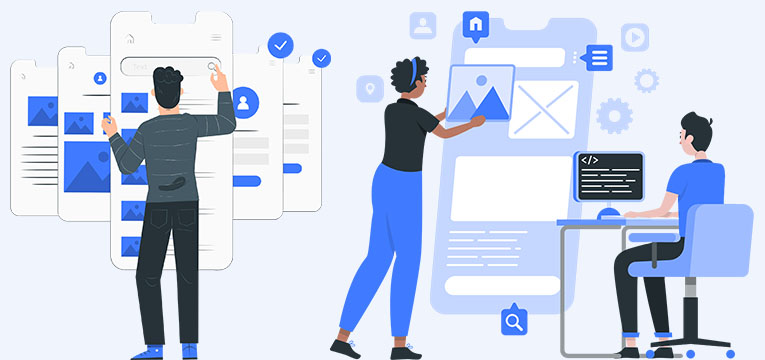Top 7 Node.js Code Optimization Tips
1. Overview – Node.js Development
Every business is working towards a common goal of vying their product against all their existing peers. This makes them focus on aspects that will make the app performance better than others. App performance has recently gained a lot of attention even since the non-functional aspects are considered to impact equally as functional ones. A functionally high-performing application means an application that ensures speed, seamless navigations and keeps the users happy with the app. Similarly, when it comes to performance, one technology that has never failed to impress is Node.js.We’ll look at some best practices for scaling Node.js servers. Your servers will then be able to handle huge traffic demands without compromising the user experience.
In this blog, we have decided to reveal all the performance tips and tricks that are tried and tested and will surely help businesses to be able to improve their performance game. Let’s get down to the points directly.
2. When to Rope a Node.js Developer?
Over the course of years, Node.js technology has gained traction among developed as well as developing countries like the US, UK, Australia, and India. Often known as a universal web and software development framework, the tech is highly recommended to develop chat engines, realtime app monitor systems, interactive tools and web pages, eCommerce marketplaces, online gaming portals, social networking websites all kinds of lightweight, effective/efficient, data-intensive real-time applications across numerous tech devices like smartphones, tablets, laptops, desktops.
However, its journey hasn’t been as dramatic as PHP, condemned to death or something by any measure but somehow Node.js development has managed to make it into the mainstream industries like none other.
Because it’s based on a server side runtime environment and it has Google’s V8 JavaScript engine. Node.js can be used for developing backend and front-end of web and mobile apps as well. Earlier it was limited to Linux and Mac OS with the time passing by it has expanded its horizon by introducing a Windows version.

3. Crucial Tips to Consider to Improve Node.js App Performance
1. Run things in parallel
Take any Node.js app into account, fetching data can be possible only with multiple internal calls or a wide range of APIs. One of the simplest ways to address such a situation is by using different middleware for each function. Technically speaking, JavaScript doesn’t stop subsequent function calls from running during the time it finishes everything and this is possible because the tech itself comprises asynchronous components.
Now to make the most of this situation(parallel features), what needs to be done is optimize Node.js through a call named async.js.
2. Node.js Load Balancer must be Used
Using multiple application servers can help you to get good performance on apps developed in Node.js.
However, many Node.js developers in India find this a tricky way as the tech with the help of a high-level of interaction enables data exchange with jSON objects. Moreover, such interaction establishes among JavaScript code running on the application servers and on the web browser.
Have you ever come across Nginx? It’s an open-source HTTP server featuring in-built load balancing. This is not it, it is easy to configure all because of its wide range of features. And you know what’s the best part here, you won’t just be able to select a particular process to receive or handle more requests but also be able to add timeouts, enforce sticky sessions, and a lot more.
3. The Key to enhance performance – data handling methods
Optimizing these data handling methods is a sure-shot way to enhance the performance of your existing Node.js application. How sure-shot, you may ask? Well, this tip not just simplifies system processes but boosts overall app efficiency.
We all know that due to CPU/IO-bound operation, Node.js programs can be slow so what should be done is start by looking at how the data is handled. In any normal scenario, an API request is sent and a response is returned – this is how data fetching is done. Optimizing this might seem a bit tricky, isn’t it? Try pagination, web developers often use this to get it done right. What they do is they separate responses into batches of content. As a result, it can be easily browsed via selective response requests.
Another approach to consider is filtering. Here the results are restricted by the criteria of the request itself.
4. Instead of Going Forward, Play Reverse Proxy Server
Being an experienced Node.js development company in India, we do get horrified at times when we see application servers directly getting exposed at the core of high-performing sites to incoming internet traffic. These scenarios are generally for WordPress-based sites.
Great scalability is at the core of any Node.js technology but that doesn’t mean its other elements cannot do anything, for example, the web server-side can handle a lot of internet traffic reasonably well. But when you are dealing with a high-traffic site, the first and foremost step which needs to be taken is placing a reverse proxy server which is meant to protect the actual Node.js server from direct exposure to Internet traffic enabling a great deal of flexibility, especially when using multiple application servers.
Simplifying privilege handling and port assignments, serving static images look more efficient, crashes can be managed more subtly, and mitigating DoS attacks are some of the best advantages of using this method of the reverse proxy server.
5. Client-Side Rendering is a must
The likelihood of creating single-page apps seems to be increasing day in day out – all thanks to MVC/MVVM frameworks.
With the availability of many frameworks like Angular, Meteor and many other JASON can be consumed. Doing this won’t just save the bandwidth but also improve speed. After all, there is no point rather than sending layout markup with each request. A plain JSON is perfect for rendering on the client-side.
6. Implement SSL/TLS AND HTTP/2
In order to safeguard your application and websites, SSL/TLS configuration is a must and with the help of reverse server proxy Node.js developers are able to implement this functionality. Many Node.js development companies are also using this to prevent their clients’ application from any kind of suspicious activity.
There is no denying the fact that more than a hundred sites tend to secure all users on the internet by using Secure Socket Layer/TLS. As one of the top-rated Node.js development companies, our team of experts can assist you in generating such SSL/TLS links to the client by using a reverse server proxy.
7. Asynchronous programming
Data fetching requires many internal calls to APIs. Most of the node.js developers in India choose this way of getting different middleware for each function to solve the issue. Since JavaScript is one such single-threaded technology, it comprises a lot of synchronous components.
By using JavaScript’s async.js, nothing can stop you from managing asynchronous codes effectively. Now what happens is, when you use this feature the code automatically gets pushed to an event queue especially when it fires after the execution of all the other codes. With such JavaScript features, there is a possibility of using an external library which eventually reverts to the synchronous blocking call. No matter how interesting it sounds, this could have undesirable consequences on the overall performance.So how to kill two birds with one arrow? Simple, start using asynchronous APIs in your code. This might be quite challenging for novices so make sure to hire professionals from an experienced Node.js development company.
4. Conclusion
For starters optimizing a Node.js application might sound like witchcraft but actually it isn’t. Although it can be a little bit trickier there is no debate about that, hiring one of the leading Node.js developers in India who are capable enough to come up with an application that should be handling thousands of requests and able to grow as your users demand is worth the investment.
Read more blogs on Node.js
The Leading Trends of NodeJS Development For 2020
Best Reasons To Choose Node.js For Enterprise App Development
With more and more companies acknowledging the dominance of mobile apps, they are compelled to seek different ways to provide their customers with the convenience...
 Sep 24, 2020
Sep 24, 2020 



Comments
Leave a message...